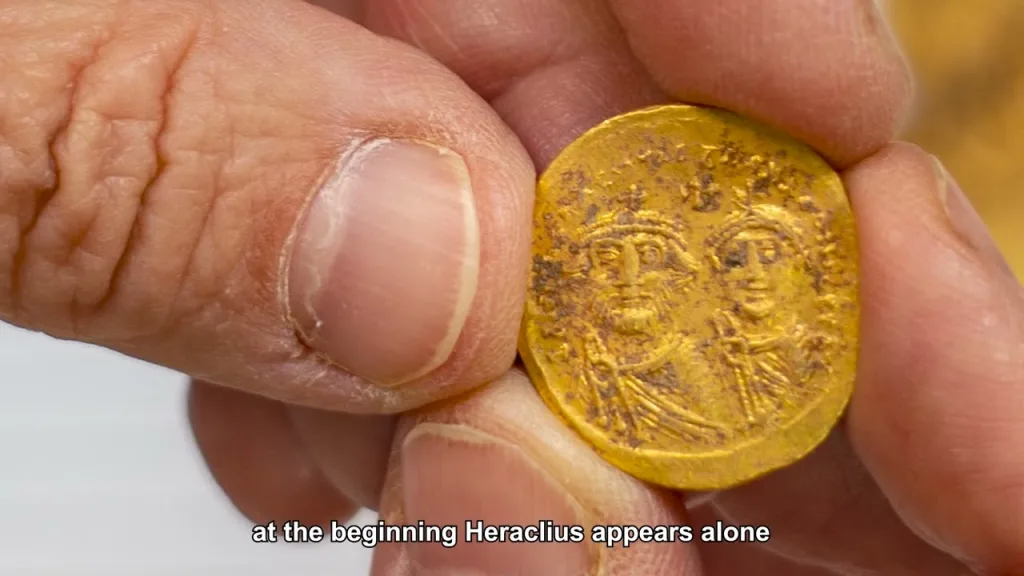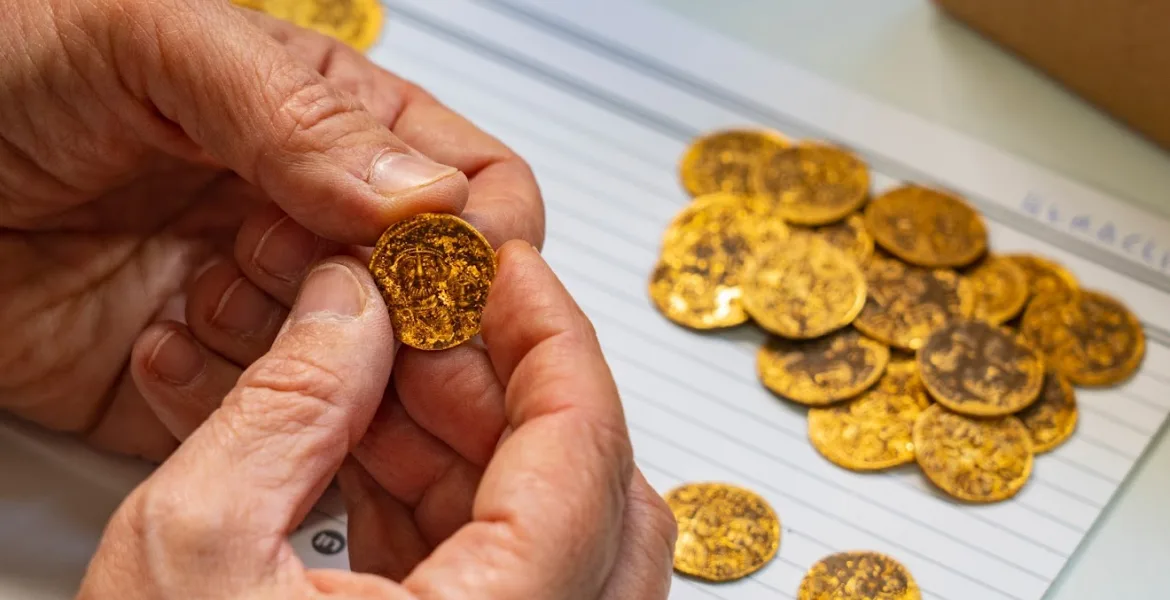The discovery of the secret stash of Byzantine-era coins in a stone wall in the ancient city of Banias is a significant find for Israeli archaeologists. The coins, made of pure gold, date back to 635 C.E. and feature portraits of Emperors Phocas and Heraclius. Experts believe that these coins were hidden during the Muslim conquest of the area, towards the end of Heraclius' reign.

The excavation took place in the Golan Heights, an area that Israel captured from Syria during the Six-Day War. The find gives insights into the historical context of the region during that time, shedding light on the tumultuous period of conflict and conquest.
Yoav Lerer, the excavation's director, suggests that the owner of these coins hid them in fear of the war, with the hope of returning one day to reclaim their fortune. However, it is clear from historical records that the owner never had the chance to retrieve his belongings.
This discovery provides a snapshot of the past, showcasing the uncertain times and the challenges faced by individuals during periods of war and upheaval. It also highlights the enduring allure of gold as a symbol of wealth and power throughout history.
Banias has a long history and today remains a place of contention. Its ancient roots include being a cultic site to the god Pan, and it was rebuilt by the Romans and renamed Caesarea Philippi. According to Christian tradition, Banias gained fame as the place where the Apostle Peter proclaimed Jesus to be the Christ, and Jesus gave Peter the keys to the kingdom of heaven. In the Byzantine period, a church was built next to the spring. During the twelfth century the city traded hands on several occasions between various Crusader and Arabic forces.

